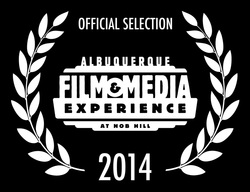
In a groovy little theater in the Nob Hill neighborhood of Albuquerque, filmmakers, friends and strangers gathered to screen Hearts In The Himalayas. Everyone asks if I am nervous. I respond with a soft but confident "No." My only concern is that there are no technical issues that flare up. It is out of my control now and all I can do is absorb the experience.
The theater goes to black and the film begins with that first note of music and that awesome first shot of the Lapa Valley. Wait for it. I hear the first "Oohs!" from the audience. As Himalayan HealthCare founder Anil Parajuli begins to
The theater goes to black and the film begins with that first note of music and that awesome first shot of the Lapa Valley. Wait for it. I hear the first "Oohs!" from the audience. As Himalayan HealthCare founder Anil Parajuli begins to
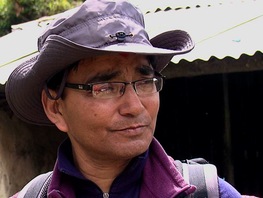 HHC co-founder Anil Parauli
HHC co-founder Anil Parauli speak of life in these villages, I can tell the audience has settled in for the duration. This is why I am not nervous. Anil Parajuli has this effect on people because you can hear the truth and compassion in his voice. He is engaging and you want to listen to his story. There lies the fruit of documentary filmmaking. A question and impromptu answer session follows the screening. What?! I was not expecting this! Now, I am nervous. Crap. The dialogue inside my head goes something like this "Okay Deb, don't fall off your 4 inch high heels going up the stairs to the stage. Don't stutter, speak with clarity, keep it pithy and don't forget to smile." Easier said than done.
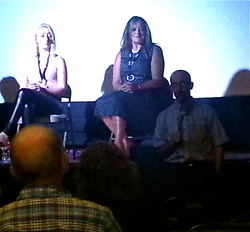 Dr. Andrew Ropp and Director Debi Lang (right)
Dr. Andrew Ropp and Director Debi Lang (right) The audience is kind and asks thoughtful questions. It is obvious they paid attention. When I mention that HHC volunteer, Dr. Andrew Ropp is in the audience, they want to hear from him. He is asked to come to the stage and answer questions. I beam with pride that he was included in the discussion.
It is clear from the questions, people want to learn more about the mission. This is exactly what I hoped would happen. By not loading the film with much detail of the day to day operations of the medical trek, it forces the viewer to engage the organization to learn more. Hearts could have easily been a feature length film, however I chose to keep it short for this purpose. Much was left out due to time constraints, which is the thorn in every filmmaker's project. The dialogue confirms my thoughts about a sequel.
It is clear from the questions, people want to learn more about the mission. This is exactly what I hoped would happen. By not loading the film with much detail of the day to day operations of the medical trek, it forces the viewer to engage the organization to learn more. Hearts could have easily been a feature length film, however I chose to keep it short for this purpose. Much was left out due to time constraints, which is the thorn in every filmmaker's project. The dialogue confirms my thoughts about a sequel.
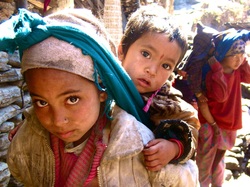 Kami children in Tippling Nepal
Kami children in Tippling Nepal After the Q&A session and for the rest of the evening, I hear over and over about the "buzz" Hearts has created. Many approach me to express gratitude for the film, sharing the HHC story and encourage me to continue my work. I am introduced to other filmmakers, composers and technical people who share my passion for humanitarian work and are interested in collaborating. Never was HHC and life in the villages of Nepal not part of the discussion. They are always with me.
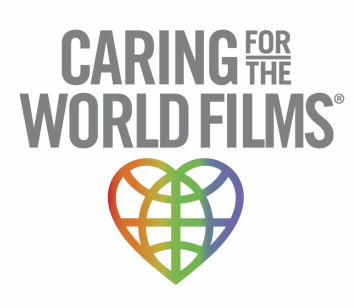
 RSS Feed
RSS Feed